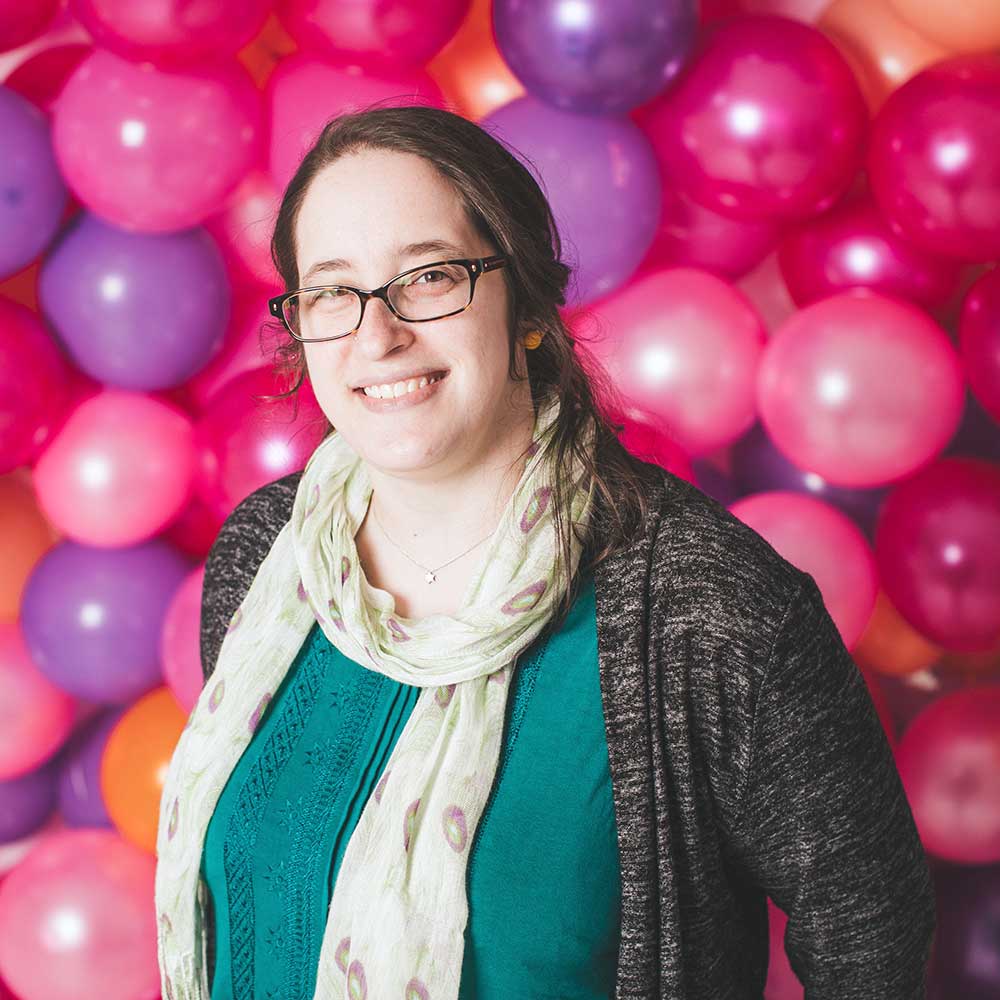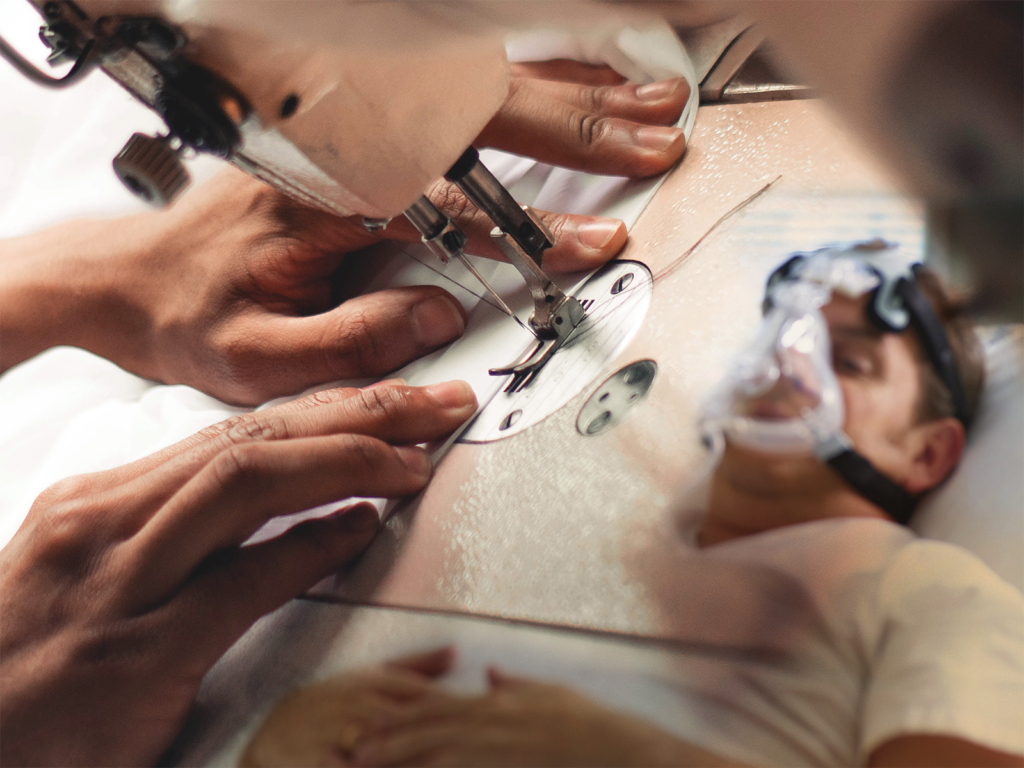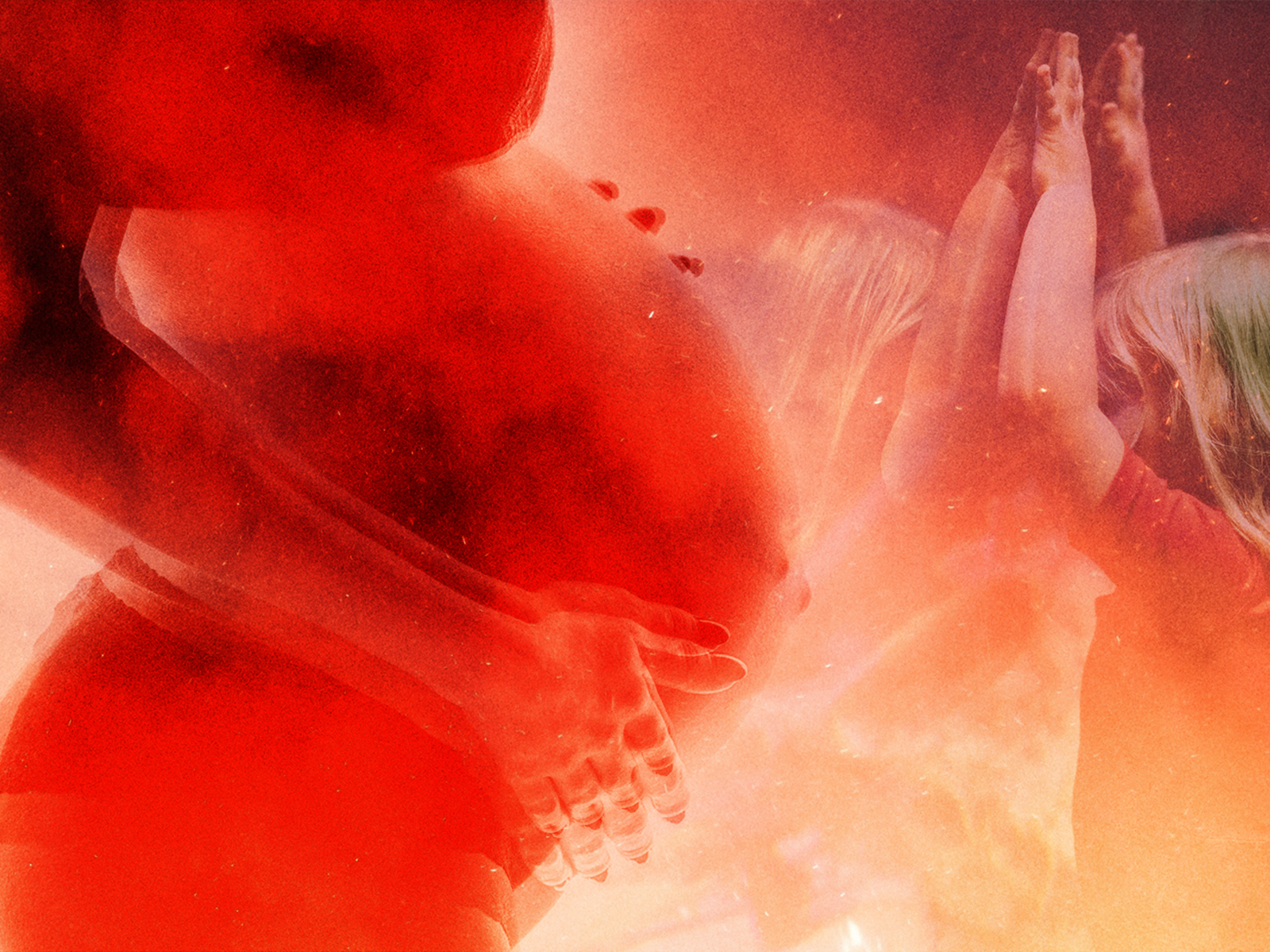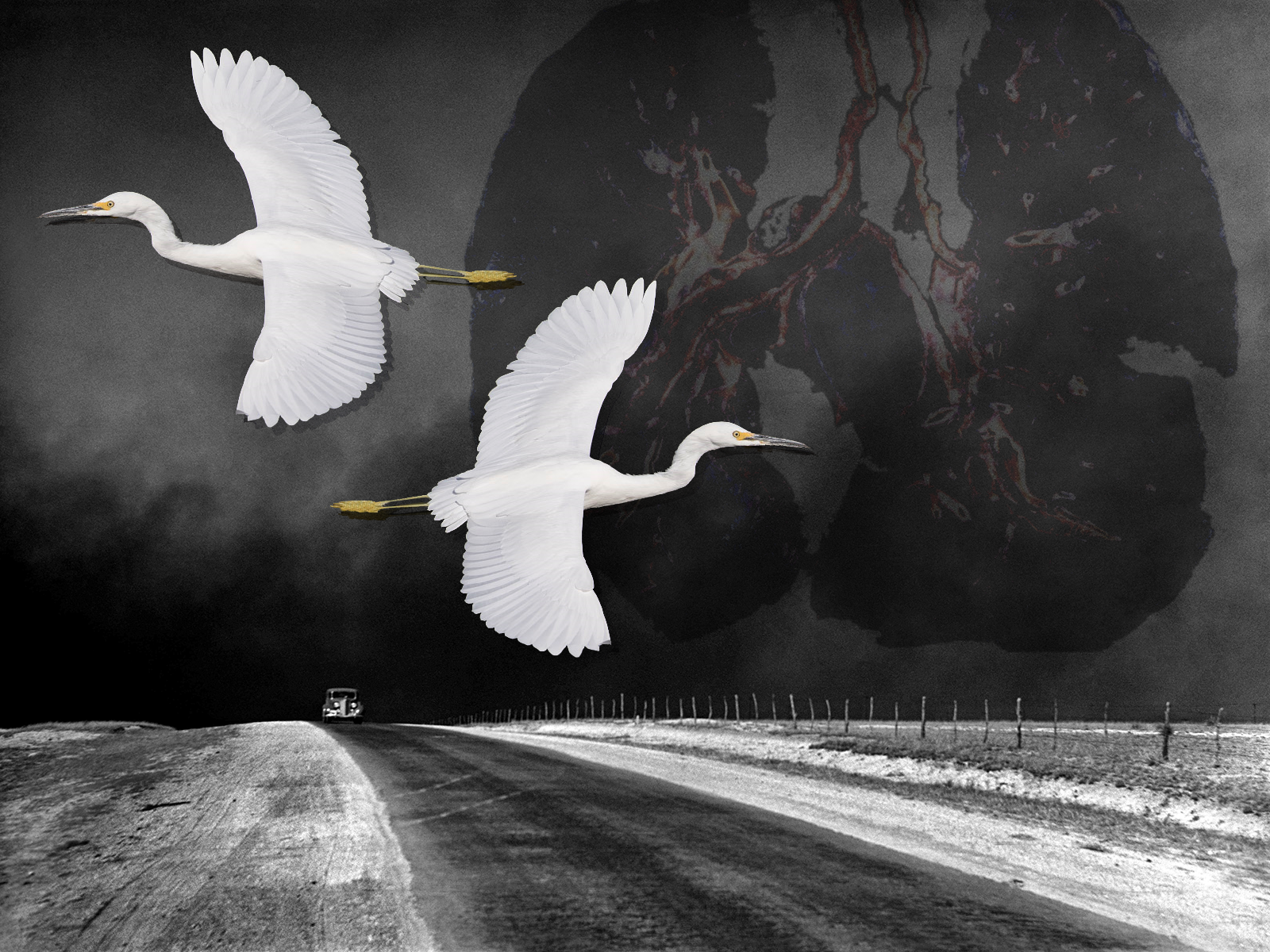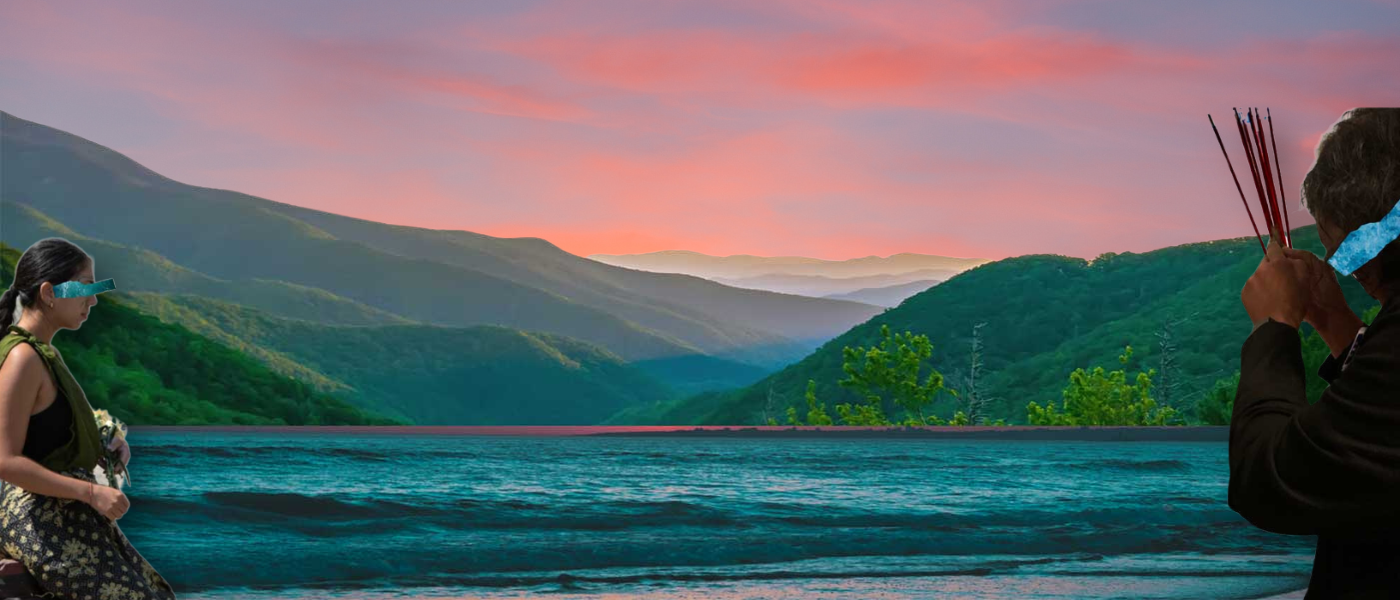Today is June 30, 2020. One year to the day since we lost you. I am standing at the ironing board, running a hot iron over a folded and stitched-together strip of quilting cotton to make bias tape. It’s a skill I taught myself after you died. I struggled at first — my forearms are lightly flecked with burn scars from accidentally touching the iron — but I’ve got the hang of it now.
Over the past few months, it seems everyone I know with a sewing machine has learned to make bias tape. Fabric masks need straps, and elastic is in short supply. So we’re making do with what we have on hand: homemade bias tape and hair ties for straps, paper clips and twist ties for nose wires, coffee filters and nylons for filtration. I’ve been working my way through my box of quilting cotton scraps, oddly-shaped off-cuts from the projects I started while you were dying, and finished after you were gone: baby blankets, aprons, potholders, quilts. I made myself a jelly bean-print mask, and one with bespectacled llamas on it. My taste in fabric, at least, wouldn’t surprise you.
Last year, we thought little of using surgical masks. There were open boxes of them lining the corridors in the hospitals where you spent much of your last five months; every time I felt a cough or a sniffle coming on, I grabbed one from the nearest box, slipped the straps over my ears, and pinched the top edge to shape around my nose before entering your hospital room. The nurses put on fresh masks and gloves before they touched you, then peeled everything off afterward. We slathered ourselves in hospital-grade hand sanitizer, sickly-smelling and foamy, from the touchless pump dispensers on every wall. When we were caring for you at home, we dispensed with masks and gloves — you were our only patient, and posed little risk to others — but still kept hand sanitizer nearby.
You died in a different time — what my friends and I call the Before Time. A time when medical professionals had masks and gloves to spare. When we could buy hand sanitizer and braided elastic in whatever quantities we required. When we could leave our houses, gather around dinner tables, dance at weddings without the shadow of a devastating virus upon us. Before the final splintering of the cracks running through American life as we knew it.
You always were a profound optimist. I found that aggravating sometimes — you knew I did — but it was part of your fabric. Even as an activist, rallying others to push back against political corruption and cruelty, you still maintained faith in American institutions. You dedicated yourself to the Democratic Party, and spoke of the electoral college as bound to the will of the people. I wonder what you would make of this new status quo: meatpacking plants humming while medical equipment grows scarce. Hobbyists churning out fabric masks by the dozen, racking up bias tape burn scars like the ones I accumulated in a different kind of grief.
COVID-19 roared into the American consciousness almost exactly one year after the cancer in your neck began choking the breath out of you. The pandemic blossomed across the US throughout the spring, in line with your half-dozen emergency hospitalizations from February to June of the previous year. Some of the earliest confirmed COVID-19 cases and deaths in the US were reported at the community hospital where you died. You were a respiratory patient in that same ICU; we watched the nurses crunch the numbers to find you an open hospital bed — a math problem that now fills my social media feeds.
Last February, a year and three days before the first confirmed COVID-19 death in the US, your airway closed up and you ended up in the ICU. It was my first time ever seeing someone on a ventilator. Whatever my mental image of a “breathing tube” had been, it was nothing like the hulking apparatus jutting out of your open mouth and pinning you to the bed. You had been sedated for the procedure, but it was wearing off by the time we arrived; you managed a weak smile through open lips, then began gagging violently from the pressure of the tube. We watched as you silently convulsed for several minutes at a time, until a nurse arrived to sedate you back into unconsciousness. The national supply of ventilators is now a matter of public concern; I wonder how many Americans know what a breathing tube looks like in a dying patient’s throat.
I think, too, of how lucky we were — how lucky we still are. Your final months were not untouched by horror, not by a long shot; cancer is remarkably democratic that way. But you were a cisgender man with money and white privilege at your disposal. You lived in a wealthy suburb, just down the road from a well-funded hospital. The medical care you received, while profoundly imperfect, was among the best that an American can expect. Medicare paid for your hospitalizations, and at-home care in between. You died in a recently renovated hospital wing, in a private room, cared for by hospice nurses, with morphine in your veins and your wife and children by your bedside.
We had feared, for months before the end, that you would die in crisis: alone, unsaveable, gasping for air. Now Americans are dying that way by the thousands. There are nowhere near enough hospital beds, let alone rooms, for them. Instead of gathering around bedsides, their loved ones gaze through the glass of windows and computer screens. The bodies being felled by COVID-19 are disproportionately Black and brown — including the people who process our meat while I hole up at home making masks. People who are no strangers to the grinding teeth of the American institutions you trusted all your life. The existence in which you died was always a rarefied one. I think you knew that.
It is strange to contemplate your being gone for a year, when time has stretched and distorted beyond meaning. For our family, that distortion began as your health declined; we spent weeks in suspended animation, waiting for the next call at any hour of the day or night, the next unanticipated crisis — an infection, a blockage, a hemorrhage — that would land you in the ICU. The anticipation of death, too, warps time; I have no memory of large swaths of the year, as my brain and body were occupied with preparing for the loss of you, and then absorbing it afterward.
In a way, my Before Time ended a year before our country’s did. The fissure began the day you ended up on a ventilator, and ran right through my timeline the day you died. Now, as we navigate another far-greater fissure, I am finding the territory both alien and oddly familiar. Once again, I am wrestling with the specter of death, the cushions and limits of privilege, the shapelessness of a stretch of time that I know will end in some unknown degree of horror. In the meantime, I am folding yards and yards of cotton fabric into bias tape.
Last year, after you died, we all came back to the house and sat around the kitchen table you built when we kids were young. We ordered takeout, opened a bottle of wine, lit a candle in the center of the table. We embraced, letting tears dampen each other’s shoulders. This year, we will sit in the backyard, because open air is safer. We will eat our meal at separate tables. We will avoid touching the same surfaces or breathing the same patches of air. There will still be wine and candles, but no embraces. We will each bring our own masks.
